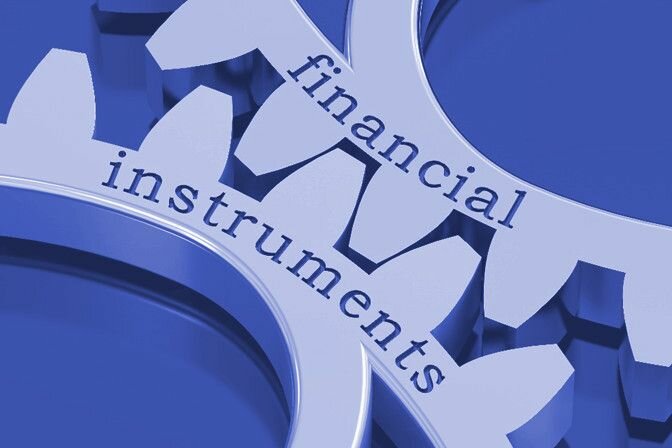A financial instrument is a contract in which one party agrees to pass money or stock in a business to another party in the future in return for something of value. So, financial instruments can be as simple as an invoice or check, or as complex as the credit default swaps that caused the collapse of the insurance company AIG in 2008. Let’s see some of the examples of financial instruments and the different types which include derivatives and cash instruments.
What are Financial Instruments?
Contracts for monetary assets that can be acquired, exchanged, developed, adjusted, or settled for are referred to as financial instruments. During a financial instrument transaction, there is a contractual obligation between the parties involved.
For example, if a company pays cash for a bond, another party must deliver a financial instrument in order for the transaction to be fully completed. One company is required to supply cash, while the other is required to supply the bond.
Cheques, bonds, and securities are basic examples of financial instruments.
Basics of Financial Instruments
Financial instruments can be physical or virtual documents that represent a legal agreement with any monetary value. Equity-based financial instruments also represent asset ownership.
Foreign exchange instruments are also a third and distinct category of these instruments. Each instrument type has different subcategories, such as preferred share equity and common share equity.
They are also classified into three types: cash instruments, derivative instruments, and foreign exchange instruments.
Types of Financial Instrument
#1. Cash instruments
Cash instruments are instruments whose principles are directly determined by market conditions. There are two kinds of cash instruments: shares and deposits and loans.
- Securities: A security is a monetary-valued financial asset that is traded on the stock exchange. A protection reflects ownership of a portion of a publicly listed business on the stock exchange when bought or traded.
- Deposits and Loans: Both deposits and loans are called cash instruments because they constitute monetary assets with a contractual arrangement between the parties.
#2. Derivatives Instruments
Derivative securities are financial instruments whose values that the underlying assets calculate. Basically, they include commodities, currency, bonds, stocks, and stock indexes.
Synthetic agreements, forwards, futures, options, and swaps are the five most common types of derivatives instruments.
- Synthetic Agreement for Foreign Exchange (SAFE): A SAFE is an over-the-counter (OTC) agreement that guarantees a certain exchange rate for a certain period of time.
- Forward: A forward is a deal between two parties involving customizable derivatives, with the trade taking place at the end of the contract at a predetermined price.
- Future: A future is a derivative contract that allows for the sale of derivatives at a fixed exchange rate on a specified future date.
- Options: An option is a two-party deal in which the seller grants the buyer the right to buy or sell a certain number of derivatives at a fixed price for a set period of time.
- Interest Rate Swap: An interest rate swap is a derivative deal between two parties involving the exchange of interest rates under which each party agrees to pay different interest rates on their loans in different currencies.
#3. Foreign Exchange Instruments
Foreign exchange instruments are financial instruments that they trade on the foreign exchange market and mainly consist of currency contracts and derivatives.
Also In terms of currency agreements, they are classified into three types.
- Spot: A currency agreement in which the actual exchange of currency occurs no later than the second working day following the agreement’s original date. The word “spot” refers to currency exchange that occurs “on the spot” (limited timeframe).
- Outright Forwards: A currency arrangement in which the actual exchange of currency occurs “forwardly” and before the agreed-upon date. It is useful in cases of frequently changing exchange rates.
- Currency Swap: A currency swap is the simultaneous purchase and sale of currencies of different specified value dates.
Financial Instrument Asset Classes
Aside from the above-listed forms of financial instruments, they may also be divided into two asset groups. Financial instruments are also classified into two asset classes: debt-based and equity-based.
#1. Financial Instruments Based on Debt
Debt-based financial instruments are mechanisms that allow an entity to increase the amount of capital in a business. So, bonds, debentures, mortgages, US treasuries, credit cards, and lines of credit are some examples of debt-based financial instruments.
They are an important part of the business environment because they enable companies to increase profitability through capital development.
#2. Financial Instruments Based on Equity
Equity-based financial instruments are structures that act as legal ownership of a business. So, common stock, convertible debentures, preferred stock, and transferable subscription rights are some examples of financial instruments based on equity.
They help companies grow capital over a longer period of time than debt-based financing, but the owner is not responsible for repaying any debt.
A company that owns an equity-based financial instrument may opt to either invest more in it or sell it as they see fit.
How Do Financial Instruments Function?
Financial instruments are the interstate highways that enable money and capital to pass from one location to another. They serve a number of functions.
Monetary compensation
We all use financial instruments on a daily basis to pay for goods and services that we need. This is also evident in apartment rentals, car lending deals, mortgages, and doctor bills.
As another example, we use credit cards for regular transactions where payment is normally due within a monthly period. Businesses send out invoices that are due by a certain date. Customers submit their payments via check. Employees get the reward of stock option plans.
Any financial instrument is a contract with the right to a future cash flow, a liability, and terms and conditions.
Capital Raising
Businesses use financial instruments to generate income and capital. Companies also issue stocks and bonds and sell them to investors in return for ownership rights, interest payments, and a pledge to repay the principal or original sum invested.
Keeping Value
Financial instruments have monetary value and one can purchase and sell them. Also, receivables, represented by outstanding invoices, can be sold to “factoring” companies, which collect the owed amounts. Credit card debts that are past due can also be sold to collection agencies. Exchanges are where stocks and bonds can be traded.
Risk Transferring
To hedge against losses, investors purchase financial instruments such as stock options and interest rate swaps. International companies purchase currency futures to hedge against the risk of fluctuating exchange rates. So, each of these contracts exchanges the right to buy, sell, or receive cash flow in the future in exchange for payment based on the terms and conditions.
Imagination
Investors buy options contracts, which give them the right but not the obligation to buy or sell stocks, currencies, and commodities such as gold in the future because they believe they will profit from a price change.
Why do Investors need to Understand Financial Instruments?
The word “financial instrument” refers to both common investments such as publicly-traded stocks and bonds and highly complex personalized transactions that take place between financial institutions.
Investors must consider the terms, conditions, and risks of their investments, no matter how basic or complex they are.
The Securities and Exchange Commission regulates the terms and conditions of publicly traded securities (SEC). The Commodity Futures Trading Commission also regulates derivatives instruments and exchange in the United States (CFTC).
Simultaneously, rating agencies and business analysts conduct research on a wide range of publicly-traded stocks in order to help investors understand the risks and rewards of a particular investment. Other types of instruments that are not as strictly regulated, such as startup crowdfunding, can have more ambiguous restrictions and risks.
What is commercial paper?
Commercial paper is a short-term debt instrument issued by companies to raise funds. Commercial paper is usually issued at a discount to its face value and is usually sold in the money market.
What is a currency instrument?
A currency instrument is a financial instrument that is used to trade currencies. Currency instruments include currency forwards, currency options, currency swaps, and currency futures contracts. These instruments are used to manage currency risk and to take advantage of opportunities in the foreign exchange market.
What is a certificate of deposit (CD)?
A certificate of deposit (CD) is a type of savings account that pays a fixed rate of interest over a fixed term. CDs are issued by banks and are considered low-risk investments.
What is a repurchase agreement (repo)?
A repurchase agreement (repo) is a form of short-term borrowing in which one party sells securities to another party and agrees to repurchase the securities at a specified price and date. Repos are commonly used by banks and other financial institutions to raise funds.
Important Takeaways
- Financial instruments are a part of daily life.
- Contracts of commitments, rights, terms, and conditions are also part of it.
- A financial instrument generates a financial asset for one party while creating a liability for the other.
- They build it around potential cash flows, or contractual rights to buy or sell an asset in the future.
Financial Instruments FAQ’s
Why are financial instruments importatnt?
Financial Instruments are intangible assets, which are expected to provide future benefits in the form of a claim to future cash. It is a tradable asset representing a legal agreement or a contractual right to evidence monetary value/ownership interest of an entity.
What is the role of financial instrument in the financial system?
Financial instruments are assets that can be traded or they can also be seen as packages of capital that may be traded. Most types of financial instruments provide efficient flow and transfer of capital all throughout the world’s investors
Which financial instrument is the most liquid?
The U.S T.Bills are the most liquid of all money market instruments. They are also the safest money market instrument because there is almost no possibility of default.
What is the difference between financial assets and financial instruments?
Financial instruments refer to a contract that generates a financial asset to one of the parties involved, and an equity instrument or financial liability to the other entity. … Financial assets can be categorized as either current or non-current assets on a company’s balance sheet.
- Financial Literacy Tests to Track your Progress Efficiently(+ quick guide and tips)
- Financial assets: All you need to leverage effectively (+ best tips)
- CAPITAL CONTROLS: BEST PRACTICES WITH PRACTICAL EXAMPLES
- FINANCIAL MARKET: All you should know with Practical examples (+ free pdfs)
- Capital Preservation Funds: Best Capital Preservation Strategies for 2021







